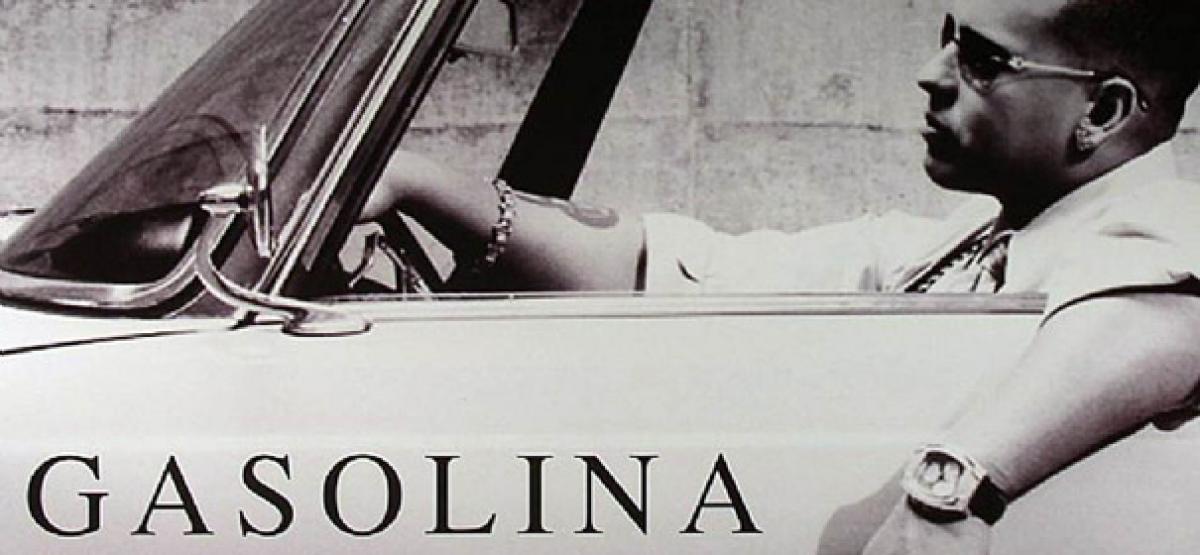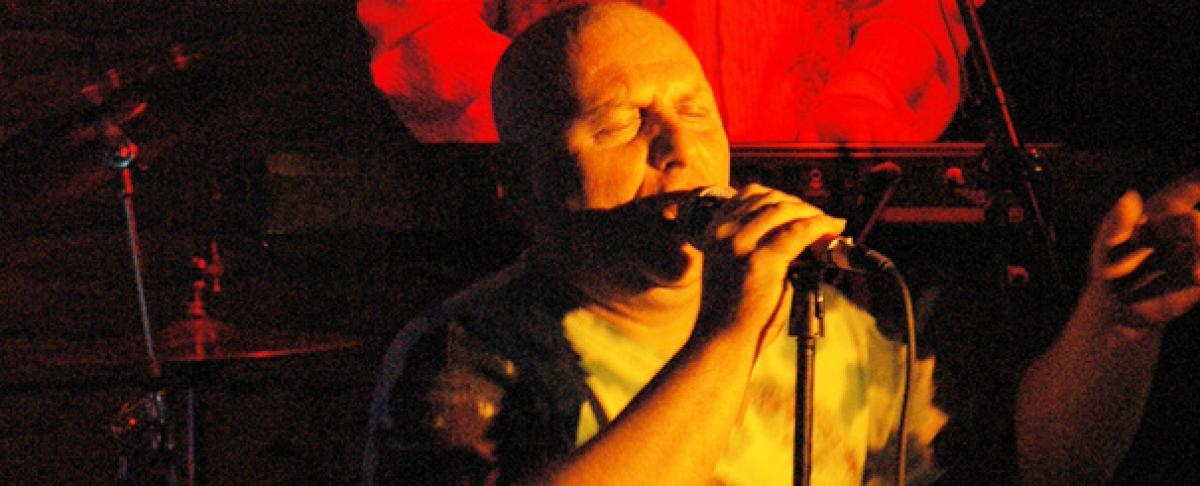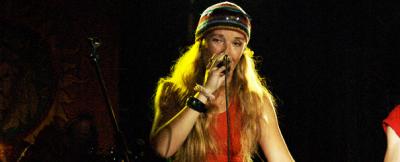
The Rise of Reggaeton
That beat you’ve been hearing – the steady boom-ch-boom-chick rattling the trunks of passing cars and moving masses in the club – isn’t just another fleeting hip-hop trend. It’s the new sound of the Americas.
Reggaeton has already accomplished something that other Latin musical forms – son, mambo, salsa, merengue, bachacta – never quite attained: not only has the music ignited the imaginations of young Latinos and Latinas, but it’s found unprecedented favour in mainstream US culture. Just a few years ago the Spanish one heard on non-Latin, commercial radio was limited to «Feliz Navidad» and «La Vida Loca»; now one hears 15 to 30 minute blocks of Spanish-language pop on the same stations that promise nothing but «blazin’ hip-hop and R&B».
Indeed, reggaeton’s inroads into hip-hop’s media channels may prove crucial in the genre’s ability to transcend, all hype aside, the «craze» status that has marked previous spikes of interest in Latin music. In contrast to the exotic cast that has consistently marked Latin music packaged for non-Latin audiences, reggaeton enjoys a sonic profile that, for all its syncopation and sway, is heard as something more familiar, more modern, more American (in the US-centric sense). Reggaeton artists and producers have not simply piggybacked on the success of their hip-hop brethren, they have exploited and expanded hip-hop’s hustle-hustle business model, especially in such areas as shameless self-promotion, savvy cross-branding, street-team marketing, and grassroots distribution.
Reggaeton lacks much of an exotic veneer precisely because the music has not been marketed to Anglo-American audiences. At least until recently, reggaeton has been music produced by and for the pan-Latino community. On the main, it still is, though many artists and producers now aspire to the platinum plaques that million-sellers such as Daddy Yankee and Luny Tunes have proven are within reach. Reggaeton’s self-sustaining relationship to a sizeable core audience draws our attention to the most obvious underlying reason for the genre’s seemingly sudden ubiquity: simple demographics.
You’ve heard it before: one in eight people in the US speaks Spanish, with much higher rates in cities, while «Hispanics» – although something of a constructed category, perhaps more useful to politicians, and far from monolithic – have surpassed African-Americans as the nation’s largest ethnic group, with census-based projections predicting 20% of the country’s population will be of Hispanic-origin by 2020. Latino migration is also increasingly circular, especially for Puerto Ricans who, as US citizens, can travel within the States relatively unfettered. One effect of these seismic socio-cultural shifts is that a number of US cities, especially along the coasts, have become veritable centers of the pan-Latino community, and the soundscapes of New York, Miami, Boston, and other sites of migration reflect this growing presence with their cosmopolitan musical hybrids, of which reggaeton represents the latest and greatest.
So it’s little surprise that the top reggaeton releases now sell in the hundreds of thousands, reggaeton performers sell out major venues across the country, and formerly ecumenical pan-Latin radio stations have been adopting the new, reggaeton-centric «Hurban» (Hispanic-Urban) format. But perhaps even more significant is reggaeton’s massive grassroots following. The music offers a set of sounds and symbols so broadly appealing that it appears to be fueling the broadest pan-Latino youth movement to date, unprecedented in its reach and appeal. From New York to Miami, Roxbury to Lowell to Springfield to Cambridge, Cuba to Colombia to Chile, young Latinos and Latinas are using reggaeton music and style to articulate a sense of community. They are producing their own recordings, performing and marketing their music in local and regional scenes, trading mp3s and samples on the Internet, and infusing what is already a vibrant movement with exuberance, vitality, and new accents.
As a modern sound, a sound intimately related to hip-hop and reggae, reggaeton gives Latino youth a way to participate in contemporary urban-American culture without abandoning important aspects of their heritage. This may help to explain why a Latin-Caribbean form – and not, say, a Mexican or Chicano style – has managed to captivate young Latinos in a way that norteno never has, despite Mexican-Americans constituting well over 60% of the US Hispanic population.
Alongside the hopes and dreams of would-be Don Omars and Ivy Queens are the hopes and dreams of record execs, media mavens, mass marketers, and other opportunists hoping to cash-in on the phenomenon. With Daddy Yankee already a major commercial force on Universal, and Tego Calderón’s Atlantic debut due out this year, reggaeton is poised to become a truly massive musical and cultural force.
A Brief History
Before reggaeton was called reggaeton, it went by the humbler, less marketable «Spanish Reggae» or Reggae en Español. Traveling along mass media circuits as well as diasporic networks, Jamaican popular music spread around the world in the 1960s and 70s. Reggae arrived in places like Panama and Puerto Rico as quickly as it reached more traditional centers of migration, such as London and New York. In the case of Panama, which proudly claims reggaeton as its own, Afro-Panamanians – many of them the descendents of Jamaican migrant workers – had been performing and recording Spanish-language reggae since at least the 1970s. Tens of thousands of Jamaicans moved to Central America in search of work in the late 19th and early 20th centuries. Having contributed to the building of the Canal, many settled on Panama’s Caribbean coast, maintaining connections to Jamaica even as some adopted Spanish as their native tongue. By the late 1980s and early 1990s, Afro-Panamanian artists such as El General and Nando Boom were making waves by adapting the latest dancehall reggae hits for Hispanic audiences, loosely (and sometimes closely) translating the lyrics and often singing the same, recognizable melodies over the original, Jamaican-produced riddims.
These musical translations found favor not simply in Panama but, crucially, in such pan-Latino, pan-Caribbean centers as NYC, where Panamanians and Jamaicans mingled with Puerto Ricans, Cubans, Dominicans, and African-Americans, and where such hybrid, resonant styles as Spanish-language reggae could find a receptive audience. In Puerto Rico, where rappers such as Vico C had pioneered Spanish-language hip-hop, these Jamaican-inflected “translations” of popular dancehall songs had wide appeal. Dancehall reggae had already established a strong following in Puerto Rico in its own right by the early 1990s, as popular songs by Jamaican deejays such as Shabba Ranks, Cutty Ranks, and Chaka Demus & Pliers helped to redefine the sound of contemporary club music. It was, in fact, a Shabba Ranks song, «Dem Bow», produced by Bobby Digital, which would lay the foundation for what became known as reggaeton. The underlying instrumental — i.e., riddim — for «Dem Bow», a minimalist production with catchy percussion, became an overwhelming favorite in Puerto Rican freestyle sessions, to the point where, for a time, Spanish-language reggae in Puerto Rico was simply called Dembow. Vocalists drew on a variety of styles, borrowing from dancehall, hip-hop, and various Latin musical traditions and creating a distinctive synthesis. By the mid-90s, a catchier tag came along, and reggaeton began to describe what was emerging as far and away the most popular music for lower-class Puerto Rican youth, at home and in the United States.
Reggaeton isn’t only a snappy marketing label, it also served to distinguish a uniquely Puerto Rican style from such precursors as Latin hip-hop and Reggae en Español. In this sense, the music’s Panamanian roots notwithstanding, Puerto Rico does have a special claim to reggaeton. It was but a skip and a jump before it found widespread support among Hispanic youth in the US. Circulating via channels of migration and – increasingly and importantly – on the Internet, reggaeton soon became the sound of a generation, finding footholds in a number of US cities with significant Latino populations.
With a building presence in clubs and on radio in New York and Miami, a couple breakthrough hits were all that reggaeton needed to introduce its sensuous sounds to the mainstream. With its Spanglish verses and overt pan-Latino pride, New York-based rapper N.O.R.E.’s «Oye Mi Canto», featuring Nina Sky and reggaeton stalwarts Tego Calderon and Daddy Yankee, explicitly pushed and promoted reggaeton to what had become — thanks to 2003’s banner year for dancehall – a reggae-friendly audience. Climbing the charts soon thereafter, Daddy Yankee’s «Gasolina» became the kind of pop anthem that no one could ignore (or avoid), convincing hip-hop moguls from Lil Jon to Diddy to get in on the action. In the last few years, on the heels of these hits, reggaeton has spread across the US and the globe, but especially in Latin America, where the music’s transnationalism, for all its power to animate expressions of pan-Latino identity, sometimes comes into conflict with national identities, as when Puerto Ricans and Panamanians debate claims over origins, or when Cuban reggaeton producers bemoan the dominance of Puerto Rican style.
Sound Reasoning
Reggaeton’s unmistakable boom-ch-boom-chick relates directly to the late-’80sarly-’90s dancehall reggae that inspired it, though it is not unreasonable for people to hear such syncopations as somehow inherently «Latin». Indeed, Jamaican reggae itself, like so many other Caribbean and American genres, bears a strong relation to Latin-Caribbean music, especially Cuban son, a genre that contributed many stylistic features to calypso and other popular music of the 20th-century Caribbean tourist industry. One finds essentially the same rhythmic patterns, with different accents, in nearly all Caribbean pop, a product of the region’s shared African, European, and indigenous cultural heritage, a high degree of inter-island migration, and more recent patterns of convergence. The same 3+3+2 subdivision that cuts compellingly across a steady 4/4 pulse can be heard and felt in Jamaican reggae and mento, Trinidadian soca and calypso, Haitian meringue and konpa, Puerto Rican bomba and plena, Dominican merengue and bachata, Cuban son and mambo, and, among others, Nuyorican salsa.
Still, for all its connections to related styles and historical precedents, reggaeton brings some new features to the table. As an utterly electronic style – usually produced on computers, drum machines, and keyboards – reggaeton embraces new possibilities for a high-tech, post-hip-hop, Latin Caribbean aesthetic. This can best be heard in reggaeton producers’ unconventional approach to the snare drum. Whereas a typical recording, even in a sample-based genre such as hip-hop, usually employs a single snare drum sound, reggaeton producers revel in the ability to draw from dozens of their favorite snare samples, frequently employing several in the course of a single song. By switching the snare sound every eight measures or so (and foregrounding it in the mix), they give form to what might otherwise be repetitive, subtly shifting the mood of the music in mid-verse or from verse to chorus. Reggaeton is undeniably a product of the digital age, and the genre’s predilection for space-age synths, techno-indebted kick-drum crescendos, and sound effects gives the productions an unmistakable modern edge.
Reggaeton also represents a break from previous Latin music in that it appears to have fostered a greater dialogue with non-Latin forms such as hip-hop and reggae rather than the popular Spanish-language genres it has supplanted. Hip-hop’s emphasis on drums and reggae’s taste for bass serve as cornerstones of the music. Contemporary dancehall reggae is still a vital source: reggaeton artists continue to make use of the newest riddims to emerge from Jamaica. (Ivy Queen’s hit «Quiero Bailar», for instance, employs the «Liquid» riddim, produced by Jamaican crossover-guru Jeremy Harding.) And the «Dem Bow» remains a staple, turning up in a remarkably high percentage of reggaeton tracks, sometimes quite explicitly and sometimes as a more subtle addition to the overall rhythmic texture. Indeed, reggaeton’s use of the «Dem Bow» as a common building block recalls the frequent use of the «Amen» break in drum’n’bass or the «Drag Rap (Triggerman)» beat in New Orleans bounce.
If there’s a prevailing sameness about the sound of reggaeton today, it’s mainly a testament to the dominance of the Luny Tunes production duo. But, if Luny Tunes appear content to rehash the same synth-patches, the same riffs and basslines, and the same drum patterns, it reflects the tradition of creative re-use that takes the Jamaican example of «re-licked» riddims as a model. Just as Lenky’s «Diwali» riddim, in various guises, produced a number of hit songs (Sean Paul’s «Get Busy», Wayne Wonder’s «No Letting Go», Lumidee’s «Never Leave You»), the galloping beat for «Gasolina», especially with new layers added or prominent riffs removed, can provide a solid foundation for any number of new songs. The best reggaeton songs to date succeed not so much by offering new sounds to listeners but by using already resonant synths and samples in novel ways and leaving space for vocalists to display their creativity over familiar forms.
Nevertheless, reggaeton has become increasingly ecumenical in its approach to sample sources. Bachata, the popular Dominican genre known for its emotional ballads and plucky guitars, has been finding its way into a growing number of reggaeton productions, while salsa remixes of reggaeton hits have become common. A new song by Tego Calderón, whose El Abayarde (Sony International; 2003) contained interludes performed to the Afro-Puerto-Rican sounds of bomba and plena, features a mix of percussive styles that point to Afro-Cuban forms as well as other Afro-Latin traditions. Given its links to hip-hop and dancehall, it’s not surprising that a number of recent reggaeton riddims employ the sort of «Orientalist» flutes and strings that have marked so many pop songs of the last few years. And, of course, as reggaeton continues its pop ascension, reaching more and more middle-class ears, it will no doubt be shaped and styled for that audience – a penchant for overwrought singing, borrowed from pop-salsa balladry as well as American Idol-style shows of gospel-fried virtuosity, has already begun to take hold. In the end, the music’s consistency may prove to be its greatest strength, offering an omnivorous stylistic template to producers: drop anything from a salsa break to a sitar line under that ol’ boom-ch-boom-chick and you’ve got reggaeton.
Representin’ (in the Doghouse)
One of the most interesting things about reggaeton’s newfound success is the implication that US audiences are finally embracing music performed in a language other than English. This may be due more to the power of the music than any sort of emerging open-mindedness, but it raises some interesting questions. Despite all the Spanish-speakers living in the US, including all the gringos who learned a little Español in high school, it seems likely that, as with Jamaican dancehall, few listeners outside of the music’s core audience are able to follow all the lyrics. Those who do, especially those who find them rather scandalous, are understandably concerned with reggaeton’s seemingly unabated and uncensored rise to the top. As club music first and foremost, reggaeton tends toward partying and sex as primary subjects. Descriptions of sexual acts and female bodies alternate between explicit language and innuendo, and women rarely appear as anything other than objects of the male gaze. The music’s attendant dance-style, perreo («doggystyle»), was seen as so salacious at one point that the Puerto Rican government attempted to ban it — a move that only affirmed reggaeton’s anti-establishment character.
Reggaeton’s relationship to hip-hop and reggae – and the shared socio-cultural circumstances of urban poverty, high unemployment, and (coerced) participation in the violent-but-profitable trans-American drug trade – go a long way toward accounting for reggaeton’s focus on sex and the bleak realities of ghetto/street/thug life. But, the glamorization of violence and material gain is far from a subcultural pathology: these are the preoccupations of mainstream American culture and society, too. San Juan is no more responsible for advancing stereotypes and negative imagery than, say, Hollywood or Washington. Overlooking the inherent critique of racial injustice in reggaeton’s bling-filled fantasies is to miss the boat.
Only relatively recently, with its acquisition of market power and stateside acceptance, has reggaeton reached Puerto Rico’s middle- and upper-classes. What was previously denigrated as crude and crass now stands as a national symbol and a promising source of foreign exchange. In a place where, despite their celebrated mixed-ness, over 90% of Puerto Ricans self-identify as «white», it’s no accident that a prominent reggaeton artist like Tego Calderon foregrounds his blackness by wearing an Afro, referring to himself as «El Negro Calde», and incorporating Afro-Puerto-Rican traditions. In the US, Hispanic immigrants often find themselves living alongside, and racialized along with, African-Americans and Afro-Caribbeans, so it’s no surprise that reggaeton works in sympathy and solidarity with the cultural politics of hip-hop and reggae.
La Futura
As reggaeton increases its reach, finding a receptive audience not just in the US and Latin America, but in Europe, Asia, and Africa, its spread will more likely resemble that of hip-hop-reggae than salsa and merengue. In that sense, it will represent a break from previous transmissions of Latin music as «world music». By integrating itself into the urban music market, reggaeton essentially markets itself, like hip-hop and dancehall, as mainstream pop, even as underground currents and fringe movements remain vital expressions of, and contributions to, the genre’s evolving sound. Top-selling artists like R. Kelly, Sean Paul, and Britney Spears are already exploring reggaeton riddims, particularly in remixes, and, to that extent, reggaeton is being «cleaned up» and stylized for the MTV masses. And, just as it always has, reggaeton will continue to draw from the most compelling contemporary pop, borrowing styles and samples from hip-hop, versioning the latest dancehall riddims, and pushing an already tech-savvy sound further into the synthesized stratosphere.
Reggaeton will also no doubt continue its dialogue with more «traditional» Latin music: one can already hear how reggaeton’s hip-hop-inflected Caribbean rhythms are finding their way into other Latin genres. Salsa bands, Rock en Español groups, and Latin-tinged musicians of all stripes are now adding touches of reggaeton to their performances, often by foregrounding and accenting, if not modulating, their snare-drums.
And yet, for all its power and popularity, reggaeton remains an embattled pop form: it’s not reggae, it’s not rap, and for some, it’s not Latin either. Reggaeton has been belittled by a vast array of critics, among them rockists, reggae purists, hip-hop heads, upper- and middle-class Puerto Ricans, and Latin music aficionados. Purists of all sorts decry reggaeton, which makes sense, for it is an inherently hybrid music. It is also, in essence, an industrial music – a high-tech product with a tendency toward, and an aesthetic based around, recycled rhythms and riffs. Although reggaeton’s detractors have some valid complaints, especially with regard to the genre’s most crassly commercial releases, it is clear that quite frequently they simply have not listened closely enough, or to the right things. . . or with their hips.
Biography
Published on June 27, 2010
Last updated on April 11, 2024
Topics
Does the global appropriation of kuduro exploit or reshape the identity of Angolans? How are «local» music genres like guayla sustained outside of Eritrea?
About fees, selling records, and public funding: How musicians strive for a living in the digital era.
From Korean visual kei to Brazilian rasterinha, or the dangers of suddenly rising to fame at a young age.




